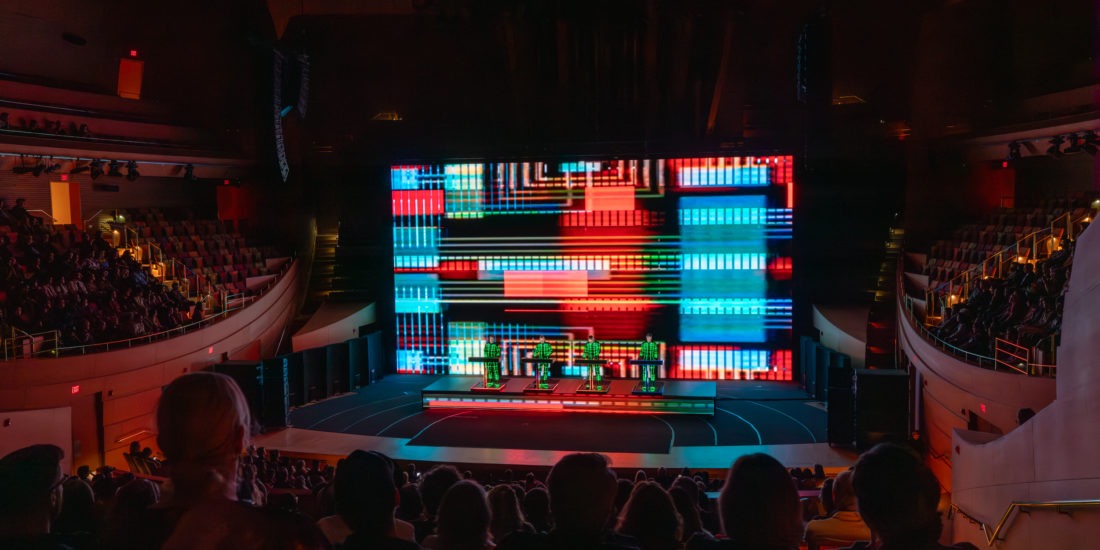
Carnival of the Animals
By Yann Perreau
Who said bringing your young child to a classical music performance the Hollywood Bowl was a bad idea? Any parent who has ever been to the open sky venue in the Hollywood Hills has probably wondered at some point if their kid could sit steadily there for an hour or two. Would they be interested, entertained, or bored, and start complaining about this “music for adults”? Should they limit their kids to the “family programs”—the Mary Poppins screening, or John Williams performing Star Wars?
At the beginning of September, I brought my five-year-old daughter to an evening performance of Le Carnaval des animaux / Carnival of the Animals, by Camille Saint-Saëns. This seemed the perfect opportunity to introduce her to a masterpiece, with Gustavo Dudamel conducting the Los Angeles Philharmonic. “This is one of the most beautiful music pieces ever written,” explained the conductor in a short introduction to the concert. Saint-Saëns’s famous chef-d’oeuvre speaks to children as well as adults. In the concert program, Piper Starnes reminds us how the composer wrote the 14-part grand suite in 1886 as a satire, a joke, to amuse the guests at a Mardi Gras party while he visited a small Austrian village. Ironically, he never allowed Carnaval to be played during his lifetime.
Finishing his few words of introduction, Dudamel concludes: “On this journey, we will be accompanied by some animations narrated by someone special, my son Martin.” My daughter and I are delighted by a beautiful cartoon of hand drawings projected on two huge screens, at the left and right of the scene. The Lion and the Clever Jackals opens perfectly for “Introduction and Royal March of the Lion,” with its famous imperial piano theme followed by wild and heated strings. Two pianists at long black Steinway pianos face one aother, with Karin Lechner and Sergio Tiempo smiling while they play. The brilliant siblings engage in musical dialogue throughout the concert, one sometimes starting a melody for the other to finish. Each instrument of the orchestra—clarinet, flute, strings, glass harmonica, xylophone, and the two pianos—dazzlingly mimics the sound and personality of each animal. The thrilling, relentless “Wild Donkeys, Swift Animals” leads to the serenity and quietness of “Tortoises.” “Aquarium,” known by film lovers as the official Cannes film festival theme, transports us into the boundless ocean, the glass harmonica chanting the enchantments of marine life and its creatures. My neighbor whispers to my daughter that the next section, “The Swans,” inspired her and so many of her friends to become ballerinas when she was her age. She smiles and listens to the gracious cello, whose melody sails above the other instruments. We won’t stay for the second act, selections from Bizet’s Carmen, as it’s already late and tomorrow is a school day. But my daughter asks me while we are leaving: “Daddy, when can we come back with mom and my brother”?


LA Phil, Carmen and Carnival with Dudamel, September 3, 2024, Hollywood Bowl, Los Angeles, from top: Sergio Tiempo (back to camera), Karin Lechner, and Gustavo Dudamel; Dudamel; Dudamel, Lechner, and Tiempo; Dudamel, Tiempo, and Lechner.
Photographs (4) by Timothy Norris, courtesy and © the photographer and LA Phil.


